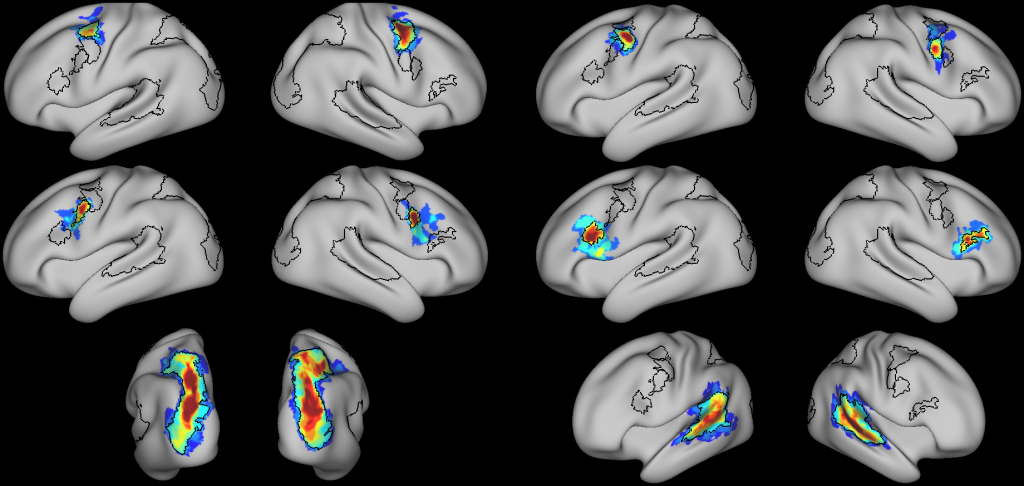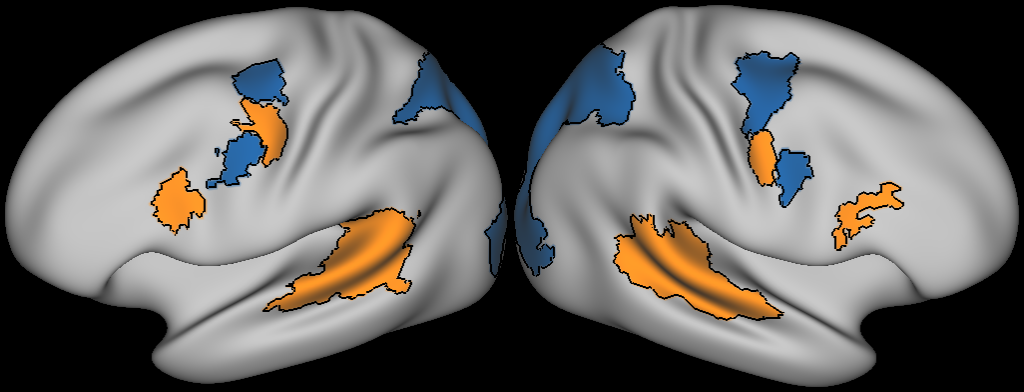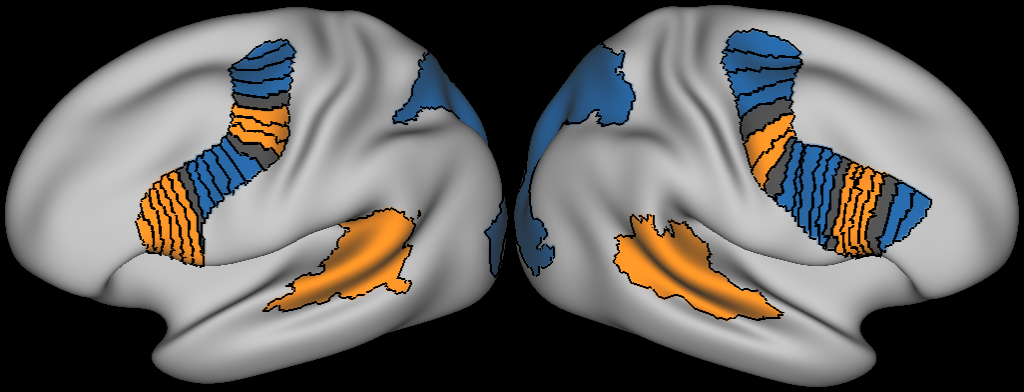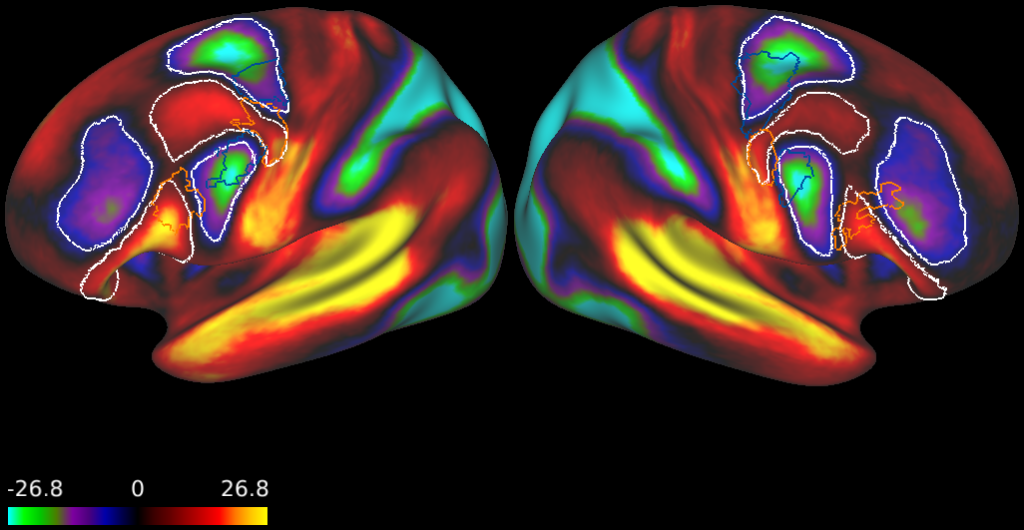FULL TITLE:
Sensory-biased lateral frontal cortex networks
SPECIES:
Human
DESCRIPTION:
Human frontal cortex is commonly described as being insensitive to sensory modality, however several recent studies cast doubt on this view. Our laboratory previously reported two visual-biased regions interleaved with two auditory-biased regions bilaterally within lateral frontal cortex. Here, we conducted a series of functional connectivity analyses to validate and expand this analysis to 469 subjects from the Human Connectome Project (HCP). Our findings replicate our previous research and leverage the HCP dataset to reveal extended sensory-biased frontal cortex.
For additional information see:
Michalka SW, Kong L, Rosen ML, Shinn-Cunningham BG, Somers DC. 2015. Short-Term Memory for Space and Time Flexibly Recruit Complementary Sensory-Biased Frontal Lobe Attention Networks. Neuron 87:882-892.
Noyce AL, Cestero N, Michalka SW, Shinn-Cunningham BG, Somers DC. 2017. Sensory-biased and multiple-demand processing in human lateral frontal cortex. Journal of Neuroscience. DOI: 10.1523/JNEUROSCI.0660-17.2017
ABSTRACT:
Human frontal cortex is commonly described as being insensitive to sensory modality, however several recent studies cast doubt on this view. Our laboratory previously reported two visual-biased attention regions interleaved with two auditory-biased attention regions, bilaterally, within lateral frontal cortex. These regions selectively formed functional networks with posterior visual-biased and auditory-biased attention regions. Here, we conducted a series of functional connectivity analyses to validate and expand this analysis to 469 subjects from the Human Connectome Project (HCP). Functional connectivity analyses replicated the original findings and revealed a novel hemispheric connectivity bias. We also subdivided lateral frontal cortex into 21 thin-slice ROIs and observed bilateral patterns of spatially alternating visual-biased and auditory-biased attention network connectivity. Finally, we performed a correlation difference analysis that revealed five additional bilateral lateral frontal regions differentially connected to either the visual-biased or auditory-biased attention networks. These findings leverage the HCP dataset to demonstrate that sensory-biased attention networks may have widespread influence in lateral frontal cortical organization.
PUBLICATION:
NeuroImage
- DOI:
10.1016/j.neuroimage.2017.08.020
- PMID:
28830764
- Sean M Tobyne
- David E Osher
- Samantha W Michalka
- David C Somers
- Boston University




